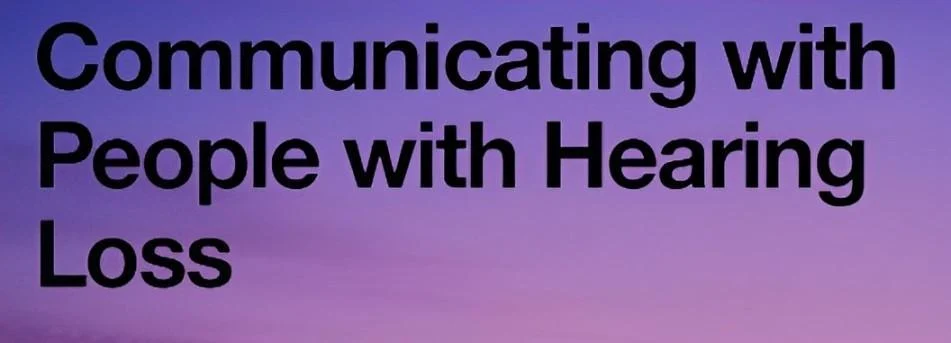Effective communication is crucial in our daily lives, and it also builds strong relationships with others. It’s challenging when interacting with individuals who have hearing loss. By understanding and implementing the right strategies, we can improve these interactions. In this blog, we can understand effective communication strategies and guide you with some tips related to hearing loss.
Understanding the Hearing Loss
Hearing loss is very intense, from mild to profound, and affects any age of the people and one or both ears. People with hearing loss struggle with so many problems, such as following the conversation, not listening to the word properly, and also in noisy environments.
Effective Communication Strategies
Here are some tips to help you communicate more effectively with people who have hearing loss:
- Gain attention before speaking: Before you start the conversation, get the person’s attention by waving a hand, tapping his shoulder, and calling his name. ensures that they are focused and ready to listen.
- Face them directly with people: Always face the person you are speaking to. This allows them to read your lips, facial expressions, and gestures to understand what you are saying. Avoid turning away or covering your mouth while speaking.
- Speaks Clearly: Use the normal voice or clear speech without shouting. When you talk with a shouting voice, it becomes a distraction of your voice and makes it harder to understand. Speak with a normal voice and enunciate your words carefully. If the person doesn’t understand, then rephrase your sentences rather than repeating the same words.
- Reduce the background noise: In the background noise, it is very difficult for individuals with hearing loss to focus the conversation. It will be possible to choose a quiet environment for your discussion. Turn off any unnecessary noise sources, such as radios or televisions.
- Use Visual Aids: Use visual aids to enhance your communication. Use gestures, facial expressions, and body language to understand your message, and also write down the points. Using pictures can also help clarify your information.
- Be passive and careful: Passive is key when you communicate with others who have hearing loss. Give him time to process and respond to what you’re saying. Be attentive and show you are willing to listen and understand. Avoid interrupting or finishing their sentences for them.
- Verify Understanding: Ensure that the person has understood your message by asking a question or requesting feedback. You can say, “Did you understand what I said?” or ask them to repeat once again. This helps in misunderstanding and confirms that your communication was effective.
- Use Assistive Devices: If the individual uses hearing aids or other assistive listening devices, make sure that they are functioning properly and used during the conversation. Some people may also benefit from using text-to-speech apps and devices that amplify sound.
- Show sympathy and regard: Always approach the conversation with sympathy and regard. Acknowledge the challenges that come with hearing loss and show that you are committed to making the conversation as good or smooth as possible. Your positive attitude makes a difference in the quality of interaction.
Hearing Loss Communication Tips
- Rephrase the sentence if necessary: If the person with hearing loss does not understand something, rephrase the sentence or repeat the same word. Some words are easier to lip-read than others.
- Ensure Understanding: Confirm that the person has understood or not. By asking them to repeat once again. This helps avoid misunderstandings.
- Provide Context: Giving context before diving into details can help the person with hearing loss and follow along more easily. For example, instead of saying, ”It is at 3 pm, you could say, “The meeting we discussed is at 3 pm.”
- Be Mindful of Group Conversations: In a group conversation, ensure that you can see everyone’s face and encourage others to take turns speaking and avoid overlapping conversation.
Conclusion
Communicating effectively with people with hearing loss involves using these effective communication strategies and incorporating hearing loss communication tips into your interactions. By making these adjustments, you can easily understand conversations. Remember, the goal is to make communication as clear and comfortable as possible for everyone involved.
For more insights and professional advice on hearing health, visit Meenakshi Speech and Hearing Clinic. Our experts are dedicated to helping you improve your communication and overall hearing health.
Book an appointment today through the website or call us!


